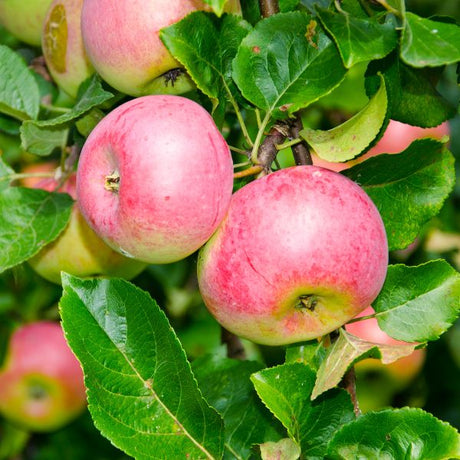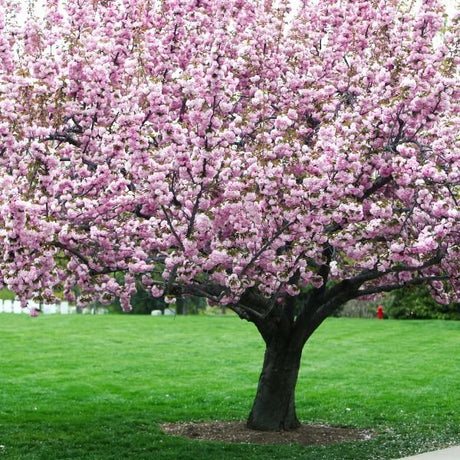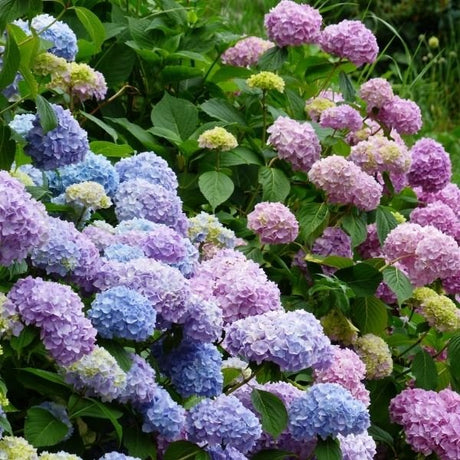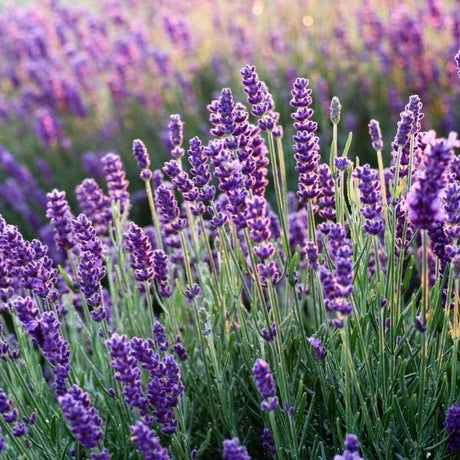Blue Rug Juniper
Juniperus horizontalis 'Wiltonii'
- Stay Protected with Plant Sentry ™
Blue Rug Juniper - #1 Container is backordered and will ship as soon as it is back in stock.
Plant Sentry™
Plant Sentry™
Plant Sentry is designed to protect both consumers and the nursery trade from invasive plant pests and diseases. Sites that display the Plant Sentry protection badge are protected from consumers buying and nurseries shipping material carrying invasive pests and diseases.
This proprietary eCommerce software prevents the shipment of a restricted plant to each state. The Plant Sentry system includes a shipment certification program. The Plant Sentry Compliance Officer works closely with NatureHills.com and each nursery or fulfillment center to ensure only compliant plants are sold to customers.
Click Here to learn more

Delivery and Shipping
Delivery and Shipping
Shipping
To obtain a more accurate shipment time-frame, simply enter your zip code in the “Find Your Growing Zone” box to the right. Our plants are grown all over the country and lead time on items may be different because of this. Once your order is placed, you will also receive the specific shipment time-frame information as part of your order confirmation. Once an item ships, you will receive shipment notification and tracking numbers, so you can follow along while your plant travels to your doorstep. We use FedEx, UPS, or USPS at our discretion.
Due to winter weather we have put a hold on shipping to the areas shown below in grey. You can still order now and we will ship the plant to you during an appropriate time for your zone.
Standard Shipping Rates
At Nature Hills we handle, package and ship the products you order with the utmost care to ensure healthy delivery. Shipping and handling charges are calculated based on the tables below. Please note that some items include an additional handling surcharge, these will be noted on the item's product page.
| From | To | S&H |
|---|---|---|
| $0 | $19.99 | $24.99 |
| $20 | $49.99 | $29.99 |
| $50 | $69.99 | $34.99 |
| $70 | $99.99 | $39.99 |
| $100 | $129.99 | $44.99 |
| $130 | $149.99 | $48.99 |
| $150 | $150+ | Approx 28% |
Click here to see our full rates
Understanding Plant Options
Nature Hills offers plants in two main formats:
- Container Plants: Grown in pots with soil, sized by container volume and plant age
- Bare Root Plants: Dormant plants without soil, sized by height measurements
Container Plant Sizes
Container sizes indicate plant age and growing capacity rather than liquid volume equivalents. Our containers follow industry-standard nursery "trade gallon" specifications, which differ from standard liquid gallon measurements.
Young Plants (6 months to 18 months old)
| Container Size | Actual Volume | Metric Equivalent |
|---|---|---|
| 2" x 2" x 3" | 0.18 - 0.21 dry quarts | 0.20 - 0.23 dry liters |
| 4" Container | 0.31 - 0.87 dry quarts | 0.35 - 0.96 dry liters |
| 4.5" Container | 0.65 dry quarts | 0.72 dry liters |
| 6" Container | 1.4 dry quarts | 1.59 dry liters |
| 1 Quart | 1 dry quart | 1.1 dry liters |
| 5.5" Container | 1.89 dry quarts | 2.08 dry liters |
Established Plants (18 months to 2.5 years old)
| Container Size | Actual Volume | Metric Equivalent |
|---|---|---|
| 2 Quart | 2 dry quarts | 2.2 dry liters |
| #1 Container | 2.26 - 3.73 dry quarts | 2.49 - 4.11 dry liters |
| 5" x 5" x 12" | 3.5 - 4.3 dry quarts | 3.85 - 4.74 dry liters |
Mature Plants (2-4 years old)
| Container Size | Actual Volume | Metric Equivalent |
|---|---|---|
| #2 Container | 1.19 - 1.76 dry gallons | 5.24 - 7.75 dry liters |
| #3 Container | 2.15 - 2.76 dry gallons | 8.14 - 12.16 dry liters |
Large Plants (3-5 years old)
| Container Size | Actual Volume | Metric Equivalent |
|---|---|---|
| #5 Container | 2.92 - 4.62 dry gallons | 12.86 - 20.35 dry liters |
| #6 Container | 5.25 - 6.01 dry gallons | 23.12 - 26.42 dry liters |
| #7 Container | 5.98 - 6.53 dry gallons | 26.34 - 28.76 dry liters |
Bare Root Plants
Bare root plants are sold by height from the root system to the top of the plant. Plants may exceed minimum height requirements.
Common Sizes:
- Trees: 1 foot, 2 feet, 3 feet, 4 feet, 5 feet, 6 feet
- Shrubs & Perennials: 1 foot, 18 inches, 2 feet
Important Notes
Container Volume Specifications
- Trade Gallon Standard: Our containers follow industry-standard "trade gallon" specifications established by the American National Standards Institute (ANSI Z60.1) for nursery stock
- Volume Variations: Actual soil volume may vary due to plant root systems and growing medium settlement
- Age Indicators: Container size primarily indicates plant age and maturity rather than liquid volume equivalents
Growing Conditions
- Plant size can vary based on variety and growing conditions
- Container size helps indicate plant maturity and establishment level
- Larger containers generally mean more established root systems and faster landscape establishment
Seasonal Availability
- Bare root plants are available seasonally when dormant
- Container plants are available throughout the growing season
- Specific varieties may have limited availability in certain sizes
Questions?
For questions about specific plant sizes or availability, please contact our plant experts who can help you choose the right size for your landscape needs.
Plant Highlights
Blue Rug Juniper highlights at a glance!
Specifications
Specifications
-
Brand
-
Botanical Name
-
Growing Zones
-
Mature Height
-
Mature Spread
-
Sun ExposureFull Sun
-
Moisture
-
Soil
-
Growth RateMedium, Slow
-
Fall Color
-
Pruning Time
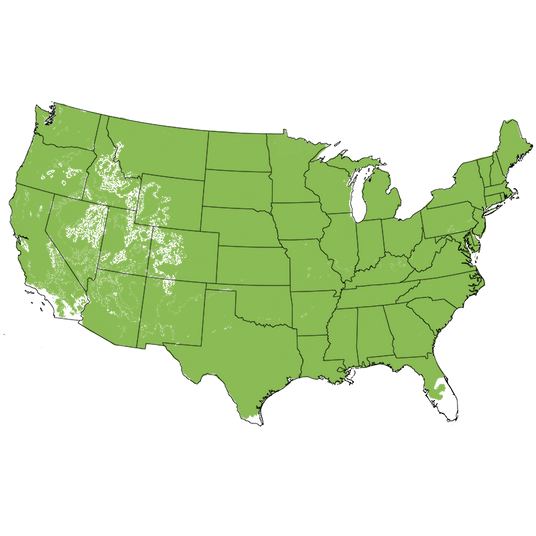
Growing Zones 3-9
Beautiful, Low Growing Silvery Blue Rug Juniper
- Cool Toned Foliage Looks Fresh All Year
- Most Popular Variety
- Softer than Other Varieties
- Versatile
- Drought Tolerant
- Extremely Cold Hardy
- Grows on the Coast
- Low Maintenance
- Beautiful Solution for Slopes and Retaining Walls
- Retains Soil for Erosion Control
- Year Round "Spiller" in Container Gardens
- Perfect Bonsai Candidate
For a rugged, durable solution to soften the look of slopes and retaining walls, use creeping Juniper. These plants are lovely, evergreen workhorses. They'll grow in a vast region - from extreme cold all the way to subtropical temperatures - across nearly all of the United States.
Blue Rug Juniper (Juniperus horizontalis 'Wiltonii') is a particularly popular variety and is also the lowest growing. Over time, it forms a dense mat of gorgeously thick, blue-green foliage.
Wonderful in mass plantings or used to edge taller varieties, Blue Rug Juniper has a low growing, wide-spreading growth habit. It will grow down a steep slope and can weep over the sides of retaining walls or large outdoor containers.
Bonsai enthusiasts can boldly create magnificent Cascading bonsai using Blue Rug Juniper, wire, small garden rake, scissors and a tall unglazed pot. This truly is a versatile plant that doesn't always receive the accolades it deserves.
Blue Rug loves hot sun and dry, rocky soils. Its silvery, sea-green color makes it look like it needs to be pampered, but Blue Rug is actually low maintenance.
Keep it manicured with good housekeeping. Remove weeds, grass, leaves and debris promptly. Trim wayward branchlets if you like to keep things tidy.
Or, for a more natural look, allow the plants to develop without a care for individual pruning. It is a good idea to give your planting a regular schedule of haircuts as needed, especially at the edge of the bed if they spill over onto sidewalks or turf.
Blue Rug Juniper is tolerant of drought, salt tolerant, city pollution and extreme heat. It's a hard-working plant that thrives in tough places in your garden.
Far safer than mowing a slope, low maintenance Blue Rug will become a valuable asset in your landscape. Place your order today!
How to Use Blue Rug Juniper in the Landscape
It looks incredible growing on a steep slope. Plant the upper half of a hill with Blue Rug in a staggered row. You can plant it from 3 - 6 feet apart. The close you plant, the faster you'll have a solid mat.
Be patient with them. It will be worth the wait! Established plantings look so polished, and the lovely color looks sophisticated next to grass. Best of all, you won't have to face the dangers of trying to mow grass on slopes, or the headaches of starting grass on slopes, either.
Use mulch between the young plants, taking care not to cover any branches with mulch. We love the idea of adding boulders, buried 1/3 into your soil. You'll create a magnificent Rock Garden.
Don't bury your plants too deep. Better to go shallow, than too deep with groundcover Junipers. On a slope, follow the curved grade when planting. You may wind up sticking some plants in nearly sideways if the slope is really deep. Don't worry, they'll grow down to connect with each other.
Plant Blue Rug Juniper at the top of retaining walls. You'll be thrilled to watch the creeping habit grow downward to create a beautiful "living wall" of delightful blue foliage. It softens the look in a really memorable way. Why not create a feature out of your more utilitarian hardscape elements?
We love the idea of creating a collection of groundcover Juniper in your yard. This variety can be a shorter edging plant for taller Andorra Juniper, for instance.
What a modern look! Busy homeowners can rely on foliage plants like these Junipers to create a calm oasis. These can be used in Zen Gardens, and work beautifully in smaller lots. Mindfully care for them, and they'll reward you with ease. They won't mind if you have to travel for work. To boost the sex appeal, just pop in a colorful container plant, or add a few small flowering shrubs.
Blue Rug used as a single species in modern raised planter boxes can also be really effective. Create a streamlined rectangle or square shaped raised bed, and fill it with sharp draining, sandy soils. Add Blue Rug down the center to spread out to the edge and spill over as you like.
Add to the sunny edge of foundation plantings or use this as a year round "Spiller" in seasonal containers. It gives a wonderful shaggy look that contrasts beautifully with more refined selections. You won't have to change it out with the seasons, as it is extremely cold hardy and can withstand snow and frost.
#ProPlantTips for Care
Plant it in full sun, please. Blue Rug Juniper requires fast draining soil to thrive. This is not a plant that can handle "wet feet" or standing water.
If you have poor drainage, plant them high and mound up. Amend with a 50/50 mix of soil conditioners in clay soil. Leave an inch or two of the nursery dirt showing to improve drainage.
Water somewhat regularly for the first 2 years and gradually extend the period between watering's. Once established in the dry west, the Blue Rug requires little summer water depending on soil type.
In heaver soils, watering once a month deeply may be all that is needed. In fast draining poor soils, rocky or sandy soils, watering may be needed every 2 weeks.
Remove leaves and weeds as soon as you can. Stay on top of that minor task to keep things easy.
Be sure to wear gloves when you handle Juniper. This variety is softer than others, but it's easy enough to pull on some protection. This is especially important if your skin is sensitive to Juniper.
Apply Dr. Earth Acid Lover's Premium and Organic Fertilizer twice a year. You'll feed it in early spring, and again around the 4th of July.
Get started on your love affair with this amazing, effective, durable and true-blue plant. Order yours today!
Easy How-To's for Creating Cascading Bonsai Using Groundcover Juniper
For the adventurous plant lover, try your hand at creating Cascading bonsai using Blue Rug Juniper. Remove the plant from its pot and study it. Use a small garden rake to remove dirt as needed. Prepare to pull the roots apart, as you need to.
You'll first find the trunkline - or thickest stem - which will form the basis of your design. Remember to follow the plant and let it dictate the design.
Decide which branches you'll keep in the design. You'll need a head branch, and 1 or 2 cascading branches that have plenty of twists and turns for interest. Once you've decided, remove the other branches.
Wire the head branch into an upright shape. The cascading branches will flow downward from that head branch. Wire the twists and bends into the cascading branches for a long, beautiful downward flow. Use a taller bonsai pot and a rich, fast-draining soil mix for acid-loving plants.
Send us pictures! We'd love to see them.




